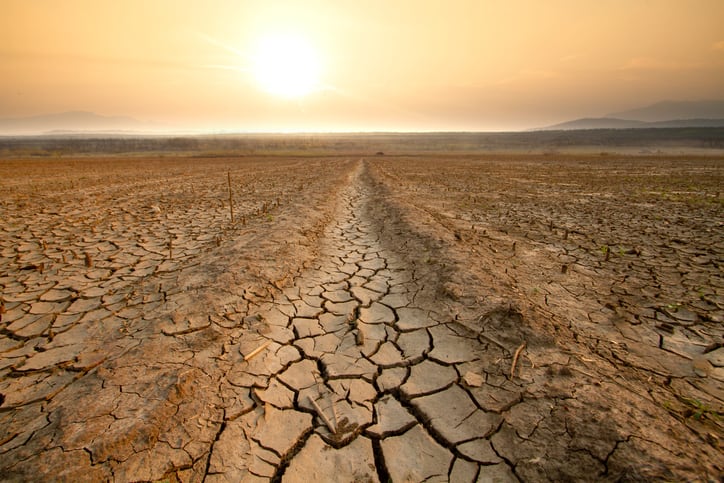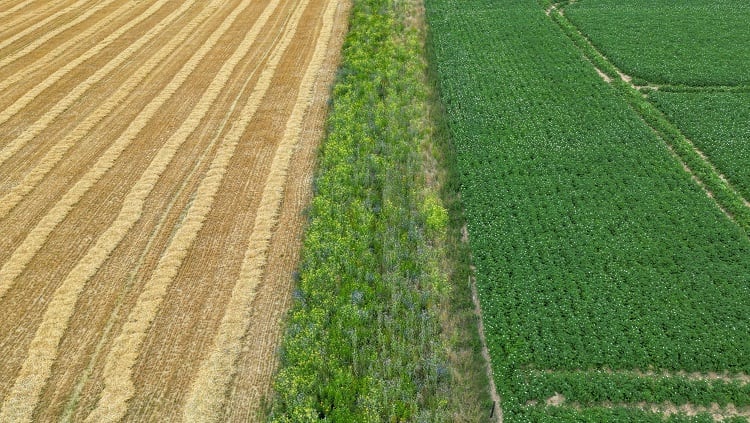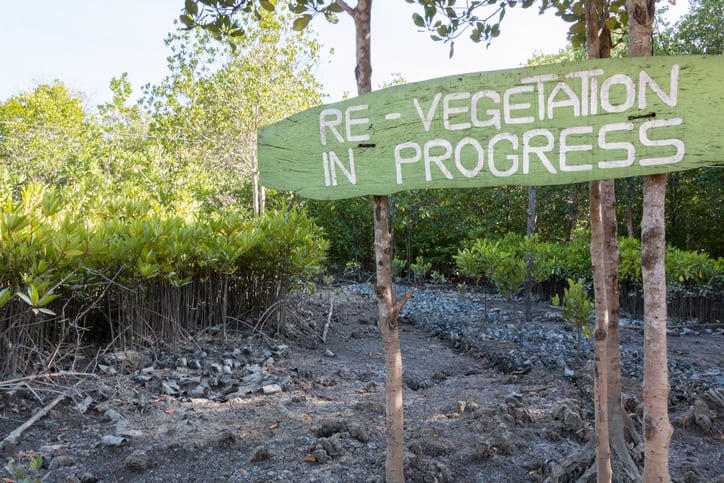Action on Hunger marked the recent World Food Day to highlight the growing consensus that climate change is already affecting crop yields and food security. “Not all crops are equally at risk,” explained the charity’s assistant director of communications at Action Against Hunger, Judith Escribano. While researchers warn that overall crop yields will decrease due to the warming climate, surprisingly changing rainfall patterns and severe weather may see some crop yields increase. For example, a 2019 study found that yields of crops like rice and wheat are already on the decline, while harvests of sorghum, which is more drought-resistant, rose during the same period.
“It’s not just weather that will impact crop yields,” continued Escribano. As the climate warms and changes, pests and diseases are spreading more widely – adding another layer of unpredictability to farming. Food storage may also become more challenging as rising temperatures make it more likely that insects or mould will destroy crops that are stored outdoors or in protected, but not cooled areas.
The climate crisis is also expected to increase malnutrition by reducing nutrient availability and the quality of food, while increasing prices at the same time. Higher temperatures and increased concentrations of CO2 in the air will lead to lower levels of nutrients like iron, zinc and protein in crops like soy, wheat and rice. “This issue is especially troubling in countries with less food diversity and where people rely on one or two staple foods for their nutrition,” she warned.
The charity has identified how climate change may impact eight key crops produced for the food industry.
Maize
Also known as corn, the global production of maize will likely see a massive reduction by 2050 due to temperature variations and decreased, unreliable rainfall. All major growing areas — like the US and Brazil — will be impacted by this change.
“Small-holder farmers are especially dependent on regular rainfall to grow maize, and climate change is already disturbing the typical rainfall patterns,” said Escribano. “In places like Mozambique, where corn is grown for local consumption, this will likely be devastating.”
Wheat
In cooler regions like Europe and North America, wheat production may see a more than 5% increase in yields, rainfall permitting. Yet, in more vulnerable areas like India, Central America, and Africa, yields may decrease by 3% or more. As India produces 14% of the world’s wheat, the decreased production in hotter and drier growing regions will have a significant impact on India’s wheat farming families, and on the millions who rely on them for sustenance.
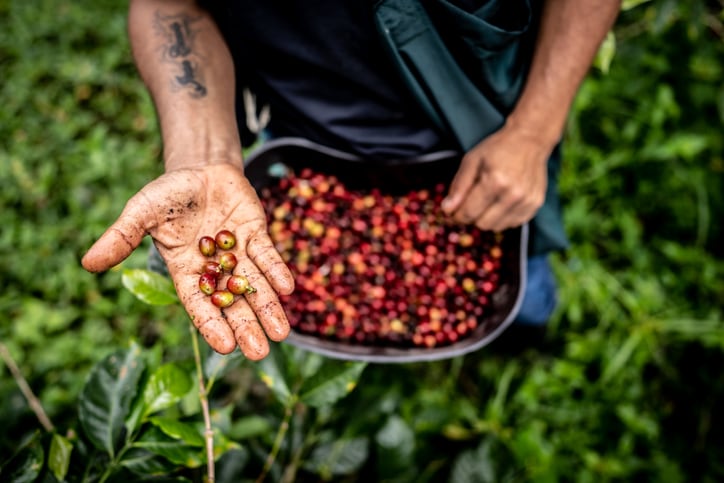
Rice
For more than 3.5 billion people, rice provides 20% or more of their daily calories, and demand is increasing. Yet, rice yields globally may drop by more than 5.5% if temperatures rise by 1.5 degrees. Some estimates predict yields could drop 11% by 2050.
If the planet's average temperature hits 2.5°C above pre-industrial levels by the end of the century, it has been claimed that half of the Mekong delta, the world's biggest rice exporter, would be underwater.
Farmers across Asia–including the major population centres of China, India, and Vietnam – and in Africa – where Nigeria is the continent’s biggest rice producer– will be hard-hit. In Bangladesh, farmers have already suffered rice crop losses due to heatwaves and low rainfall in the growing season, which led to the destruction of over 168,000 acres of rice. Coastal fields at sea level are especially at risk from rising sea levels, when seawater can inundate the dry land, damaging or destroying the rice crops.
As the climate crisis is calling into question rice’s future, here in Europe, the EU’s European Rice project is raising awareness of rice grown in Europe including promoting the sustainability benefits.
Soy
The growing popularity of soy is driving deforestation that contributes to higher carbon levels. This trend is most noticeable in South America, where farmers are increasing soy production to export to China and to meet the growing demand for industrial animal feed.
The effects of climate change on soybean yields are mixed, as researchers find that soybean plants respond favourably to higher concentrations of CO2 in the air. “Soybean yields also may increase if farmers switch from other crops, such as wheat, or expand into previously forested lands — which is happening in the Amazon and may occur in areas that today are too cool for soy production, like New York State and southern Canada,” pointed out Escribano. “Yet, even if harvests increase in the near term, most scientists project that yields will decrease later this century as heat and water stresses intensify.”
Potatoes
By 2050, the global production of potatoes could decrease by as much as 9%. As potatoes need a steady supply of water to grow, fewer areas will be suitable for potato production, according to Action on Hunger. In potato-growing places that rely on melting mountain snowpack, like Idaho, or a steady rainy season, like Bolivia, farmers will need to adapt varieties or invest in irrigation to maintain production.
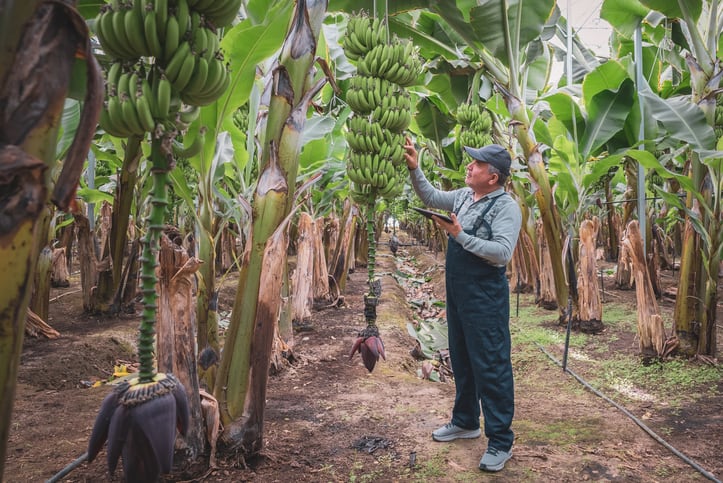
Bananas and plantains
These similar products are grown in the tropics as cash crops or as local food sources. Researchers found that due to rising temperatures over the past 20 years, plantain production fell by 43%. Popular varieties of bananas also are threatened by diseases, like black leaf streak, which can spread faster and further in hotter weather. Yet Action on Hunger highlights that projected weather changes also could mean more land on which to grow bananas and plantains by 2070.
Cocoa
Demand for chocolate is growing, and it’s “unlikely that cocoa production will be able to keep up”, warned Escribano. Cote d’Ivoire and Ghana in West Africa are responsible for half the world’s cocoa production, and the region is already experiencing erratic rainfall and hot winds. Cocoa beans only grow well in very specific conditions, meanwhile. “They like consistent temperatures, high humidity, and regular rainfall,” Escribano said. Rising temperatures are driving cocoa production to higher elevations, where there is simply less land — or where cultivation could mean deforestation.
Coffee
Coffee is a valuable export crop for many small-holder farmers who rely on the income to buy food and supplies for their families.
In major coffee exporting nations, the crop provides economic opportunity throughout the country through farming, processing, trade, finance and related roles. Likewise, “all could be at risk” according to Escribano. Ethiopia, which is Africa’s top coffee producer, could potentially lose 25% of its coffee yields by 2030.
What can be done?
Action Against Hunger suggested, like many others, that to avoid supply disruptions, farmers may need to expand production or adopt new techniques to achieve the same yield. Some climate-specific crops, like coffee, may need to be grown in new areas. Farmers might also need to start growing more resilient and climate-appropriate varieties of familiar crops, or new kinds of foods altogether.
“Action Against Hunger is taking several measures to build a more resilient agricultural system,” revealed Escribano. “First, we’re teaching farmers climate-smart growing techniques and introducing climate-resilient crops to help them make the most of their dwindling resources. Second, we’re using agroecological approaches, which improve efficiency and enhance natural ecosystems. Last, we’re running farmer field schools where farmers can experiment and practice what they’ve learned on demonstration plots before applying the lessons to their own land.
“Consumer tastes might need to evolve too, as a changing climate can mean adapting to new foods and a changing menu for billions around the world. It takes time to help farmers find and prepare the land and successfully adapt by learning about new crops and new growing techniques — and for people everywhere to learn new ways of shopping and eating. But if we start now, we can sow the seeds for sustainability while there is still time."


